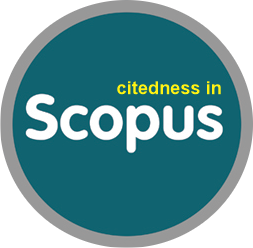The Relationship Between Loneliness and Quarter Life Crisis in Early Adulthood in Medan City
DOI:
https://doi.org/10.32493/JJSDM.v8i1.44006Keywords:
Loneliness; Quarter Life Crisis; early adulthood; Medan CityAbstract
Quarter Life Crisis is a situation experienced by individuals entering early adulthood or what is known as the process of emerging adulthood, when they feel pressured by various demands that must be done to become adults. Early adults who experience a quarter life crisis sometimes take steps to withdraw from the environment due to shame, fear, or feeling incompatible with others, resulting in loneliness. The purpose of this study was to determine whether there is a relationship between loneliness and quarter life crisis in early adulthood in Medan City. The subjects in this study were early adults aged 20 to 29 years who were in Medan City, with a sample size of 150 people. This study used a quantitative method with a sampling technique in this study was simple random sampling. The measuring instruments used were the quarter life crisis scale and the loneliness scale version 3 (UCLA). The results of this study indicate that there is a positive relationship between the loneliness variable and the quarter life crisis, with a correlation value of 0.613 with p = 0.000 <0.05, which means that the research hypothesis is accepted. It can be concluded that the higher the loneliness experienced by early adults, the higher the quarter life crisis, conversely, the lower the loneliness, the lower the quarter life crisis in early adults in Medan City.
References
1. Agustina, S. M., Fitriani, P. N., Haryanto, H. C. (2022). A descriptive study of the quarterlife crisis in the emerging adulthood phase in Mataram City during the pandemic. Scientific Journal of Psychology. 13(1), 60-71
2. Artiningsih, R. A., & Savira, S. I. (2021). Character: Journal of Psychological Research, 8(5), 1-11.
3. DiTommaso, E., & Spinner, B. (1993). The development and initial validation of the Social and Emotional Loneliness Scale for Adults (SELSA). Personality and Individual Differences, 14(1), 127–134.https://doi.org/10.1016/0191-8869 (93) 90182-3
4. Fazira, S. H., Handayani, A., & Lestari, F. W. (2023). Factors that cause quarter life crisis in early adulthood. Journal of Education and Counseling (JPDK), 5(2), 2227-2234.
5. Haliza, N., & Kurniawan, A. (2021) The Relationship Between Self-Disclosure and Loneliness in Early Adults of Online Application Users. Journal Of Nursing Research. 1(1)
6. Herawati, I., & Hidayat, A. (2020). Quarterlife crisis in early adulthood in Pekanbaru. Journal An-Nafs: Psychological Research Review, 5(2), 145-156.
7. Iswari. (2016) Iqomah, I., Meyritha, M., & Yoga, Y. (2023). Overview of the Quarterlife Crisis on Emerging Adulthood. Journal of Applied Psychology (JPT), 4(2), 93-101.
8. Lestari, U., Masluchah, L., & Mufidah, W. (2022). Self-concept in dealing with the Quarter Life Crisis. IDEA: Journal of Psychology, 6(1), 14-28.
9. Martin, L. (2016). Understanding the Quarter-Life Crisis in Community College Students. In Dissertation Regent University. ProQuest LLC.
10. Melalondo, M. C., & Sarajar, D. K. (2024). Loneliness and Quarter-Life Crisis in Final Year Overseas Students from Outside Java. Psychoborneo: Scientific Journal of Psychology, 12(1), 59-65.
11. Robbins, A., & Wilner, A. (2001). Quarterlife crisis : The unique challenges of life in your twenties. Penguin Putnam.
12. Mutiara, Y. (2018). Quarter Life Crisis of Final Year BKI Students. State Islamic University Sunan Kalijaga Yogyakarta, 121.
13. Nabila, J., & Retnaningsih, R. (2022). IS ADVERSITY QUOTIENT RELATED TO QUARTER-LIFE CRISIS IN EARLY ADULTHOOD? Journal of Psychology, 15(2), 349-360.
14. Putra, I. B. A. D. S., Ayuningtias, A. U. H., & Retnoningtias, D. W. (2021). THE RELATIONSHIP BETWEEN EARLY ADULT LONELINESS AND ONLINE DATING DURING THE PANDEMIC IN BALI. In National Scientific Seminar on Technology, Science, and Social Humanities (SINTESA) (Vol. 4).
15. Robinson, O. C., & Wright, G. R. T. (2013). The prevalence, types and perceived outcomes of crisis episodes in early adulthood and midlife: A structured retrospective-autobiographical study. International Journal of Behavioral Development, 37(5), 407–416. https://doi.org/10.1177/0165025413492464
16. Robinson, O. C. (2015). Emerging adulthood, early adulthood and quarterlife crisis: Updating Erikson for the 21st century. Emerging Adulthood in a European Context, 17–30. https://koppa.jyu.fi/en/courses/226401/learning-materials/pre-reading-for-1-2-robinson
17. Santrock, John W. (2014). Educational Psychology. Jakarta: Salemba Humanika.
18. Santrock, J. W. (2017). Life-Span Development 16th Edition. McGraw-Hill Education.
19. Siagian, G. P., & Brahmana, K. M. (2023). An Overview of Loneliness in Single Women Working in Medan City. Innovative: Journal Of Social Science Research, 3(5), 913-923.
20. Sugiyono. (2017). Quantitative, Qualitative, and R&D Research Methods Bandung: Alfabeta, CV.
21. Peplau, L. A., & Perlman, D. (1982). Loneliness: A sourcebook of current theory, research & therapy. Canada: John Wiley & Sons, Inc.
22. Wood, D., Crapnell, T., Lau, L., Bennett, A., Lotstein, D., Feriss, M., & Kuo, A. (2017). Emerging adulthood as a critical stage in the life course. In Handbook of Life Course Health Development (pp. 1–664). Springer, Cham.
Downloads
Published
How to Cite
Issue
Section
License
Copyright (c) 2024 Mutiara Malau, Nenny Ika Putri Simarmata

This work is licensed under a Creative Commons Attribution 4.0 International License.
Authors who publish in this journal agree to the following terms:
The author owns the copyright of the article and assigns to the journal the right of first publication with the work simultaneously licensed under the terms Atribusi 4.0 Internasional (CC BY 4.0)
 which allows others to share the work with acknowledgment of the work's authorship and initial publication in this journal.
which allows others to share the work with acknowledgment of the work's authorship and initial publication in this journal.Authors may enter into separate additional contractual arrangements for the non-exclusive distribution of the published journal version of the work (for example, posting it to an institutional repository or publishing it in a book), with acknowledgment of the work's original publication in this journal.
Authors are permitted and encouraged to post their work online (for example, in institutional repositories or on their websites) before and during the submission process, as this can lead to productive exchanges, as well as earlier and larger citations of published work (See The Effect of Open Access).






.png)

